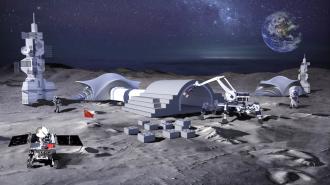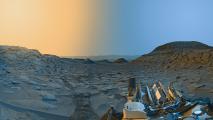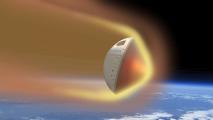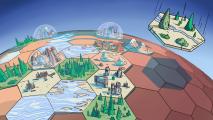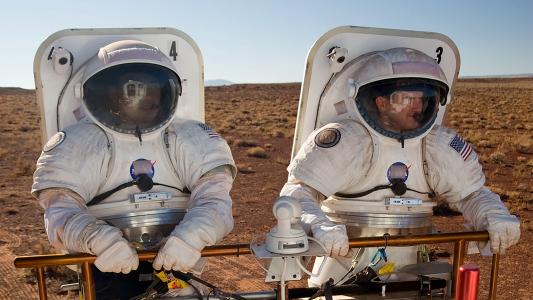China has an ambitious plan to build moon bases using bricks made from lunar regolith — and the project could start as soon as 2028.
The need: On April 8, more than 100 researchers gathered at Huazhong University of Science and Technology (HUST) for the Extraterrestrial Construction Conference, China’s first conference to discuss the creation of future moon bases.
“Eventually, building habitation beyond the Earth is essential not only for all humanity’s quest for space exploration, but also for China’s strategic needs as a space power,” participant Ding Lieyun told China Science Daily, according to the South China Morning Post (SCMP).
“We will be using real moon soil to make the first brick right there on the moon.”
Ding Lieyun
The plan: Ding could play a key role in helping China get its future lunar bases off the ground — his research team at HUST has designed several potential moon bases and developed technology that could be used to actually construct them on the moon.
One of those is the “Chinese Super Mason,” an autonomous robot designed to create structures out of bricks. Another is the bricks themselves — Ding’s team has come up with a LEGO-like design for the blocks, which it proposes to make using 3D printing, lasers, and lunar regolith.
They could get a chance to see their ideas put to the ultimate test as soon as 2028, as China reportedly plans to send a Super Mason to the moon to build a lunar brick as part of the Chang’e 8 mission, which is expected to launch in 2028.
“We will be using real moon soil to make the first brick right there on the moon,” Ding told Changjiang Daily, according to the SCMP.
“It might take us 20 to 30 years or longer to eventually settle down on the moon, but we must start working together now.”
Yu Dengyun
Looking ahead: China has a lot planned between now and the construction of that first moon brick — in 2025, it will send Chang’e 6 to the moon to collect samples, and in 2026, Chang’e 7 will land on the moon to hunt for water that could be utilized by future lunar astronauts.
The success of those missions could help China meet its goal of landing its first astronauts on the moon in 2030 — and later establishing moon bases to sustain a long-term presence on its surface.
“It might take us 20 to 30 years or longer to eventually settle down on the moon, but we must start working together now,” Yu Dengyun, deputy director of the Science and Technology Committee at the China Aerospace Science and Technology Corporation, told China Science Daily, according to SCMP.
We’d love to hear from you! If you have a comment about this article or if you have a tip for a future Freethink story, please email us at tips@freethink.com.
